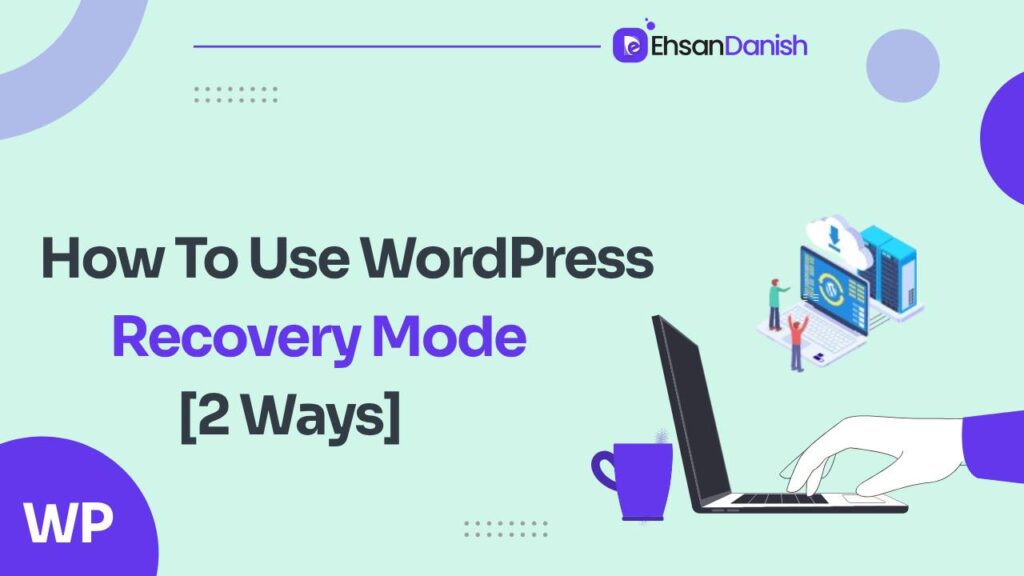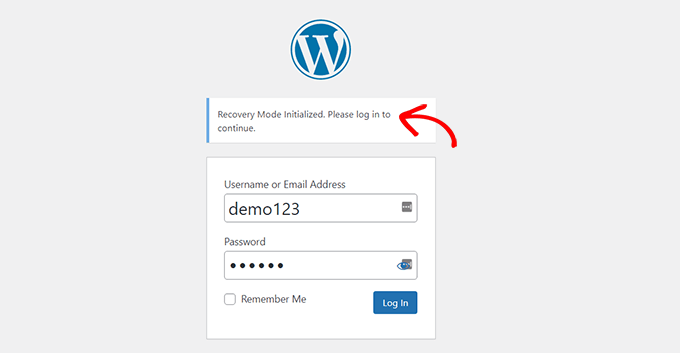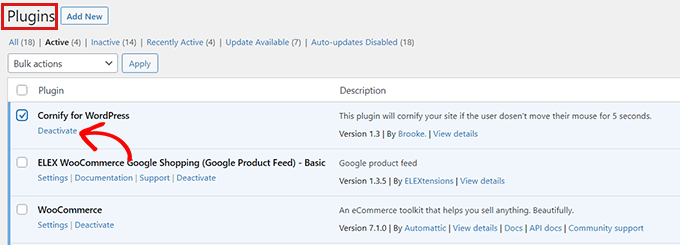Has your attempt to access your WordPress website resulted in the dreaded message: “There has been a critical error on this website. Please check your site admin email inbox for instructions”? If so, your site has likely entered WordPress recovery mode, a crucial feature that helps you rectify severe issues on your website. In this comprehensive guide, we’ll explore what WordPress recovery mode is, how to use WordPress recovery mode, and how to efficiently resolve problems to get your website back on track.
What is WordPress Recovery Mode?
Recovery mode, a core feature introduced with WordPress 5.2 in May 2019, is designed to simplify the process of resolving fatal errors on your website. Rather than allowing these errors to disrupt your site entirely, WordPress will automatically initiate recovery mode.
In recovery mode, you retain access to your WordPress admin dashboard through a specialized link. This provides a valuable opportunity to address the problem without resorting to complex solutions like connecting to your server via FTP.
What Triggers WordPress Recovery Mode?
Recovery mode isn’t manually enabled; it triggers automatically when WordPress detects code that may disrupt your site. This code could originate from a problematic plugin or theme that you’ve installed. Alternatively, if you’re making custom code edits to your site (e.g., through your child theme’s functions.php file), the faulty code might be of your own creation.
Understanding the Role of Recovery Mode
When recovery mode is initiated, WordPress takes the following actions:
- Pausing Problematic Code: WordPress attempts to pause the code causing the issue. For instance, if the problematic code resides within a plugin, that particular plugin will be paused.
- Email Notification: You will receive an email at the address associated with your administrator account. This email will contain a link that allows you to access the dashboard in recovery mode.
- User-Friendly Error Message: Instead of displaying the underlying error on your site’s front end, WordPress presents a simple message stating, “There has been a critical error on this website.”
Manual Fixes
While recovery mode is an invaluable tool for resolving site errors, it’s not your only option. All of the typical WordPress troubleshooting methods remain applicable, enabling you to fix your site manually without resorting to recovery mode.
Note: Prior to entering recovery mode, it’s essential to create a backup of your WordPress site.
These methods can address most, if not all, issues that trigger recovery mode. Manual fixes will restore your site’s functionality even without launching recovery mode.
How to Access WordPress Recovery Mode
Method 1: Using Recovery Mode Through the Email Link
- Check Your Administrator Email: If you encounter an error, make sure to check the email associated with your administrator account. WordPress will send an email detailing the specific error that’s affecting your website.
- Access Your Admin Dashboard: The email will provide a link that allows you to access your WordPress admin dashboard. Click on the link, and you’ll be directed to the dashboard with a Recovery Mode banner.
- Deactivate Problematic Plugins or Themes: In your admin panel, navigate to “Plugins” » “All Plugins” and click the ‘Deactivate’ link under the problematic plugin or theme. If the email doesn’t specify the culprit, deactivate all plugins and reactivate them one by one to identify the issue.
This link remains active for 24 hours from the moment the email is dispatched. After this period, WordPress will send another email containing a new recovery link, also valid for 24 hours. This cycle continues as long as your site remains in recovery mode, ensuring you receive fresh links every 24 hours.
By clicking the link in the email, you’ll be prompted to log in to WordPress using the standard login form. Notably, this form includes an additional notice indicating that you are in recovery mode.
Method 2: Using Recovery Mode Without Email Link
If you haven’t received an email from WordPress but are experiencing website errors, you can manually enter Recovery Mode by creating a URL. Replace ‘example.com’ with your site’s domain name in the following URL:
yoursite.com/wp-login.php?action=entered_recovery_mode
Accessing this URL will take you to the Recovery Mode login page. After logging in, you can address the website error.
Note: When using this method, WordPress won’t automatically identify the problematic plugin or theme. You’ll need to troubleshoot this manually by changing your theme or deactivating plugins.
Fixing the Issues Triggering the Error
When you log into your site in recovery mode, you’ll encounter the standard WordPress dashboard with a couple of additions:
- Exit Recovery Mode Option: A new “Exit Recovery Mode” option is visible on the WordPress toolbar.
- Admin Notices: You’ll see admin notices that help identify the issue.
For example, an admin notice might inform you that one of your plugins is causing problems, such as “One or more plugins failed to load properly.” If you intentionally tampered with code in a plugin, this makes sense.
To address the issue:
- Deactivate: You can deactivate the problematic plugin to restore your site’s functionality. You can then consider replacing it with an alternative plugin or reaching out to the plugin’s developer for assistance.
- Resume: If you’ve manually resolved the problematic code snippet, you can choose to resume the plugin to reactivate it. However, only select this option after making the necessary fixes. Resuming the plugin without resolving the issue will trigger the error again.
You may like:
Conclusion
WordPress recovery mode is an invaluable core feature designed to assist in rectifying fatal errors, such as the WordPress white screen of death. It automatically triggers when problematic code threatens your site, allowing you to access your dashboard and resolve issues without complex technical maneuvers. With the knowledge and tools provided in this guide, you can confidently restore your WordPress website’s functionality and ensure its uninterrupted operation.








